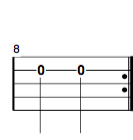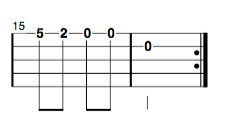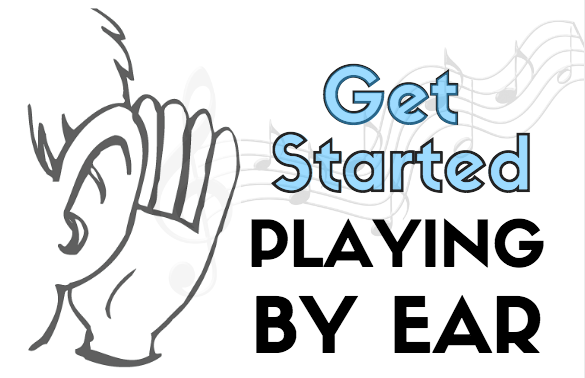
In lesson 1, we began our first foray into the world of picking out music by ear by finding the basic melody notes for a few songs on the banjo.
The good news is that, if you were able to find the notes of the song on the banjo, then you’ve already conquered the fundamental skill required to play by ear. From here, it’s simply a matter of following a logical progression of steps to get you where you want to be.
For this installment, we’re going to take things up one.
Playing Tunes By Ear
While some banjoists stick to just playing and singing songs on their banjos, most also enjoy playing tunes, i.e. songs without words. There’s a wonderful catalog of solo “banjo tunes” that are part of the tradition, in addition to the thousands of “fiddle tunes” that are beloved by old time banjo enthusiasts.
So, chances are, being able to pick out and arrange tunes by ear is something worth learning as well.
In this lesson, your mission will once again be to extract out the basic melody from a fiddle tune. And, in reality, there are really two skills here to learn, which are:
- SKILL 1: Finding the core melody of a tune.
- SKILL 2: Finding those notes on your banjo.
If you’ve been through the first lesson, you’ve already worked on the second skill, finding the core melody notes on your banjo. So your primary objective here is to practice isolating out the core melody of a tune. In this particular case, you’ll be trying to extract the core melody from a tune played on the fiddle.
As mentioned in lesson 1, with clawhammer banjo we can divide all the notes into two categories: the core melody notes plus everything else. The “everything else” part is the stuff folks layer on top of the melody, and is typically determined by the instrument, the musician (and their own stylistic choices), and the style in which it’s being played (clawhammer vs. fingerstyle banjo, for example).
So, when listening to a tune played on any instrument, we’re trying to separate out the melody from the decorations. And the best way to learn how to do so? Practice it!
Here we go…
Tune Exercises
Tune #1:“Julianne Johnson”
Tuning: aDADE tuning
For the first exercise, your job will be to listen to a tune being played on the banjo, clawhammer style, by myself. So, in this case, you’re trying to extract out my “banjo-istic” decorations to find the core melody.
Julianne Johnson is considered a “fiddle tune,” and as is often the case with many fiddle tunes, it’s divided into parts, or repeating melodic units. In this case, there are two parts, which are typically referred to as an “A” and a “B” part. Each part repeats once. Thus, it can be when learning fiddle tunes to learn them part by part, which is how we’ll approach them here.
Go ahead and try to get the A part of this tune imprinted in your mind, then try to hum or whistle that melody once you have it:
Here’s me humming the basic melody for the A part “Julianne Johnson”
Now see if you can find those notes on your banjo using the diagram below as your guide:
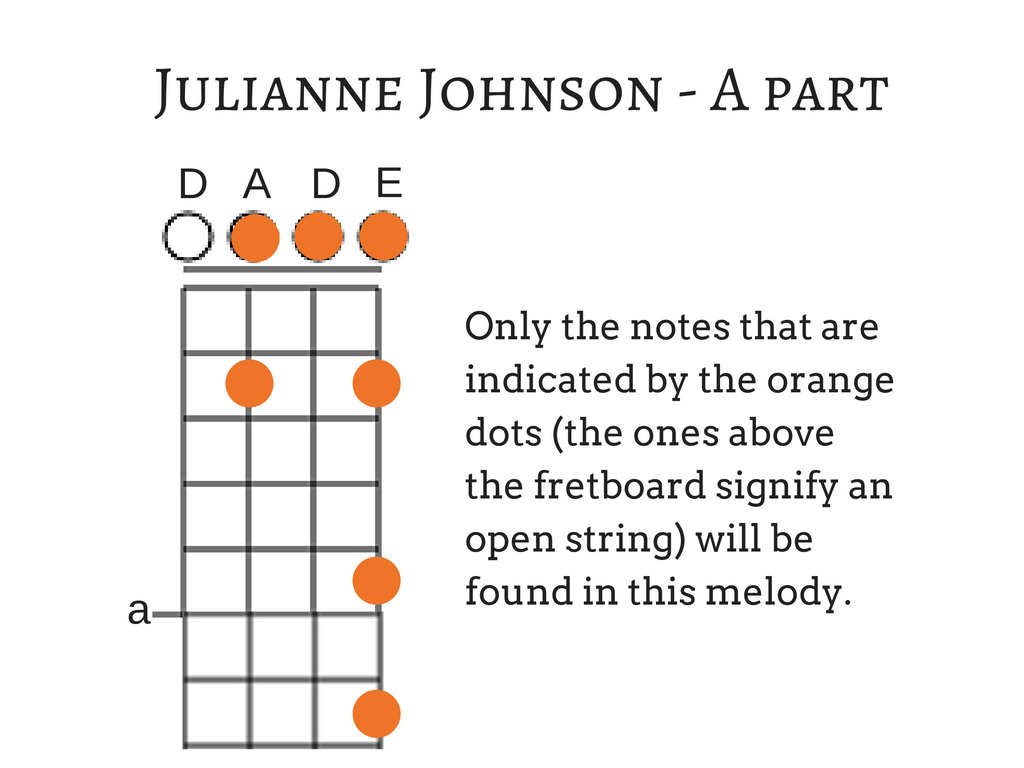
When you think you’ve got it, or need a hint, check the tab below:
Now do the same for the same for the B part. Here’s a clip of me humming the basic melody of the B part:
Now see if you can find those notes on your banjo using the diagram below as your guide:
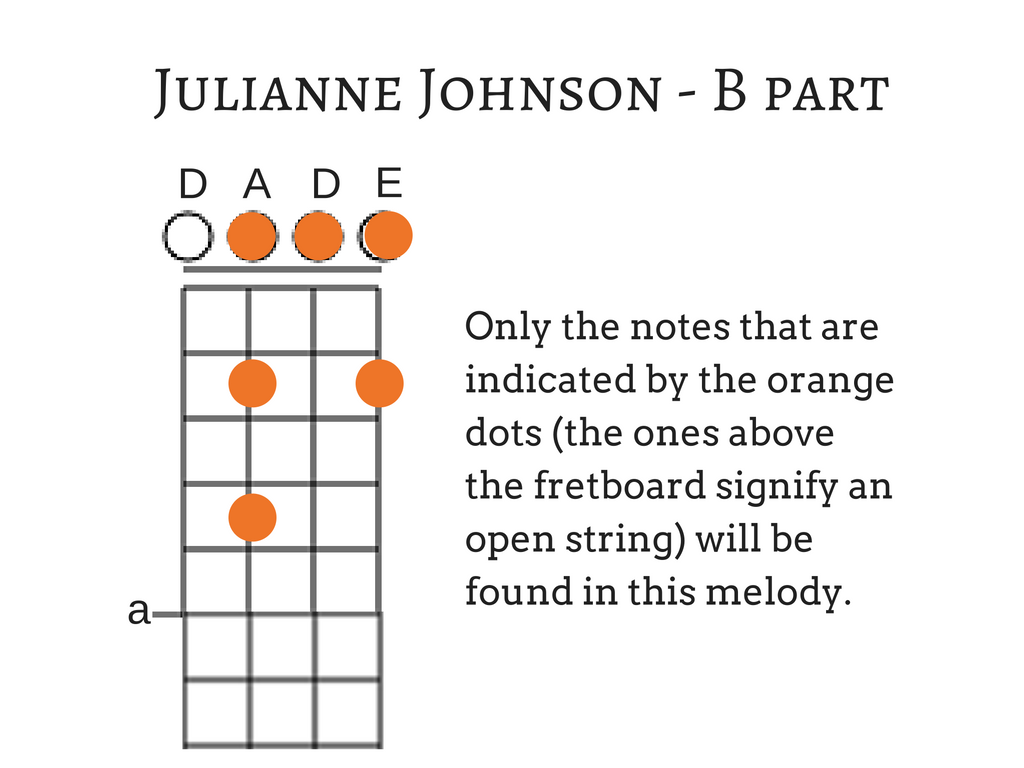
When you think you’ve got it, or need a hint, check the tab below:
Tune #2:”Fly Around My Pretty Little Miss”
Tuning: aDADE tuning
This time, instead of listening to a tune being played on the fiddle, we’ll listen to one being played on the banjo.
You may find it slightly more difficult to pick out the core melody played on the fiddle, since it’s likely that you’re more familiar with the “language” of clawhammer banjo than the “language” of the fiddle, making it a bit easier for you to hear what’s melody and what’s stylistic decoration.
But being able to pick out tunes by ear on instruments other than the banjo is a very useful skill, as it will greatly expand the amount of material you can play by ear.
First, take a listen to this tune being played on the fiddle in the video below (by fiddler Eddie Bond). Listen to it multiple times, trying to hear just the core of the melody (stripped away of the “fiddle-istic” decorations).
This fiddle tune also has two parts, an “A” and a “B” part (each repeating once), and we’ll learn each of these as a unit.
Go ahead and try to get the A part of this tune imprinted in your mind, then try to hum or whistle that melody once you have it:
Now, here’s a clip of me humming the basic, core melody of the A Part:
And, just as you did last week, your task is to locate those melody notes on your banjo. Once again, I’ve constrained the potential choices here, as indicated by the orange dots on the diagram below.
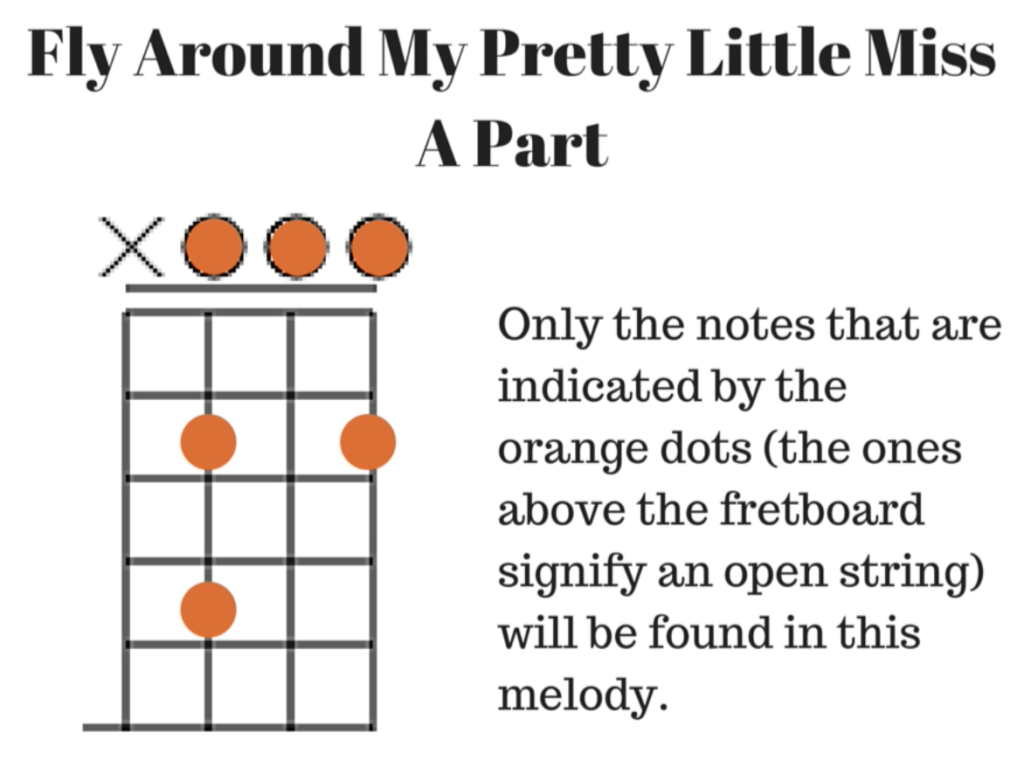
When you think you’ve got it, or need a hint, check the tab below:
Now do the same for the same for the B part. Here’s a clip of me humming the basic melody of the B part:
Now look for those notes using the diagram below as your guide:
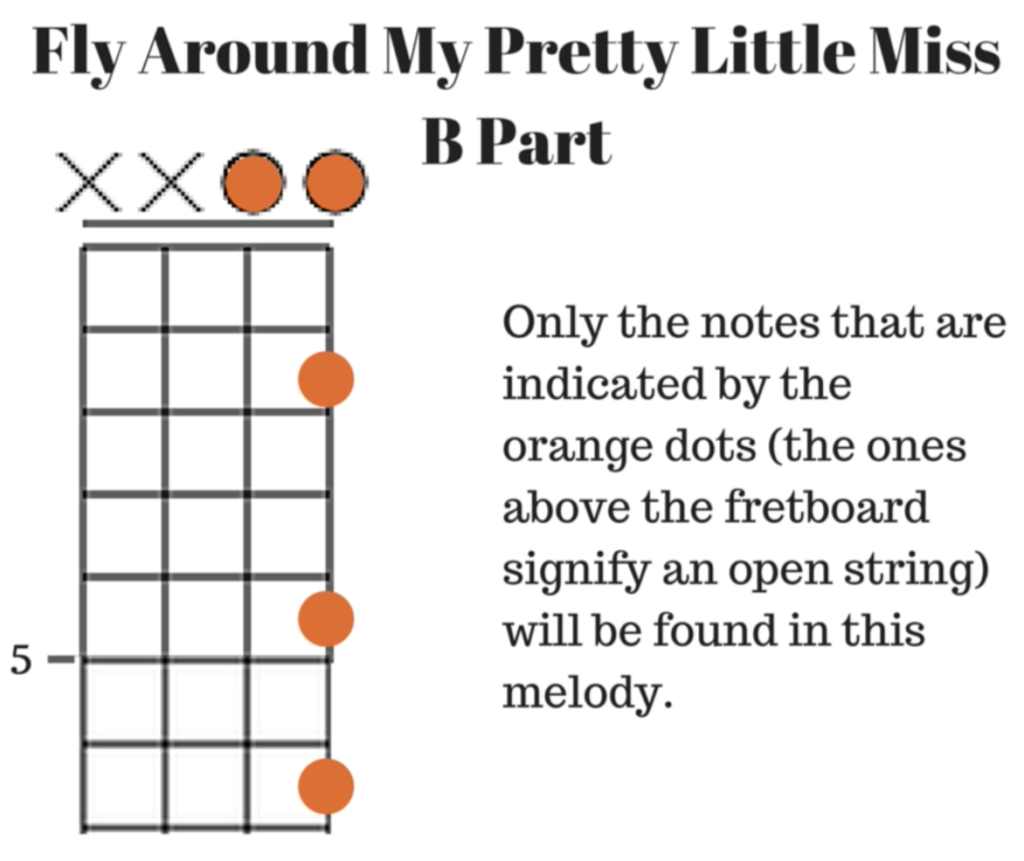
When you think you’ve got it, or need a hint, check the tab below:
Tune #2:“Johnny Don’t Get Drunk”
Tuning: aDADE tuning
First, take a listen to the two versions of this tune in the video below, listening again for the underlying, skeletal of the melody.
This tune is again divided into two equal A and B parts.
Try to pick out each one individually, and hum or whistle that melody it once you have it.
Here’s me humming the basic melody for the A part “Johnny Don’t Get Drunk”
Using the diagram below as a guide, now see if you can find those notes for the A part on your banjo:
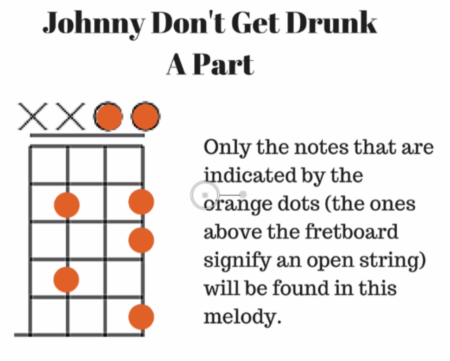
When you think you’ve got it, or need a hint, check the tab below:
Now do the same for the same for the B part. Here’s a clip of me humming the basic melody of the B part:
Now see if you can find those notes on your banjo using the diagram below as your guide:
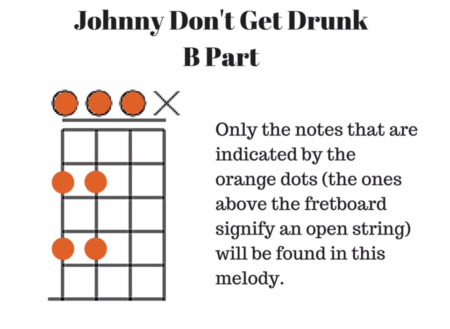
When you think you’ve got it, or need a hint, check the tab below:
Onward!
Now it’s time to keep the momentum going!
Much of the ability to play by ear involves “active listening,” or listening for a specific purpose (unlike just passively listening solely for pleasure).
Keep practicing your ability to listen for the basic melody of a tune, and then your ability to find that melody on your banjo.
One place you might try is the Clawhammer Tune of the Week, the playlist for which is below (click the icon at the upper left to toggle between tunes). It has the advantage of having the tunings listed at the beginning of the video, so that you know you’re in the right key when you go note hunting.
See you with the next installment!






